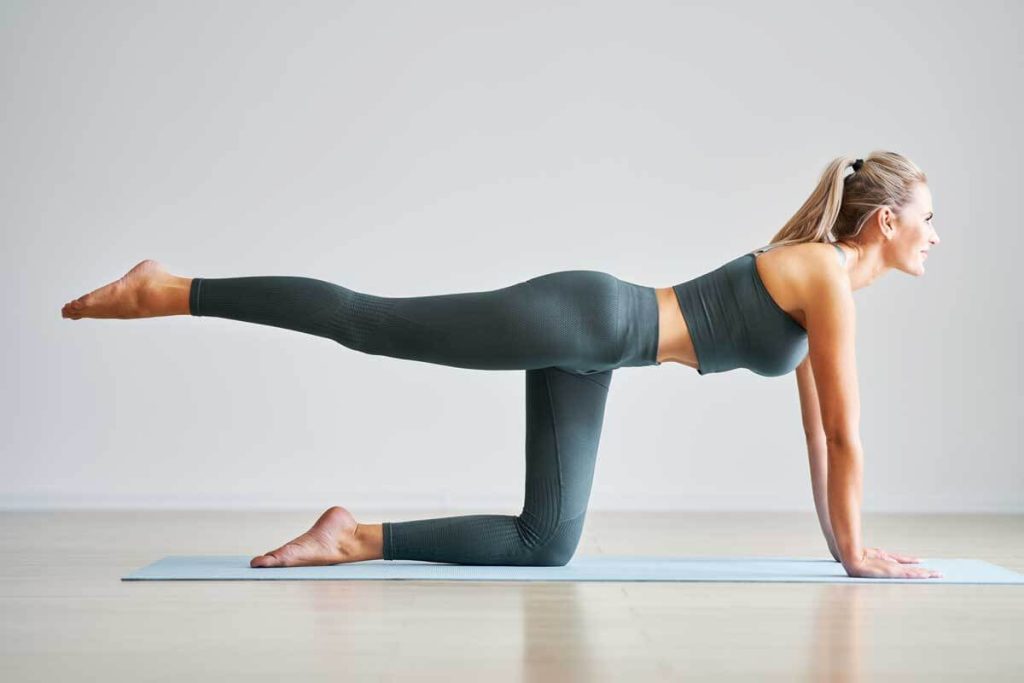Content Attributes
A facelift seems like a pretty minor procedure these days, but it is still a surgery with a recovery period that you should take seriously, to protect your health and get the best results.
Sitting on the couch during that recovery period can feel boring and frustrating. After a little while at home, you might start to get a little stir-crazy and yearn for some of your favorite activities, like yoga and working out, to help you de-stress and relax.
Yoga is a relatively light form of exercise that you can start just a few weeks after your facelift, but you should still progress with caution and follow your body’s signals to avoid potential problems and complications.
When Can I Resume Doing Yoga After My Face Lift?
It is recommended that you wait 3-4 weeks after your facelift to resume your yoga practice. At that point, your healing should have progressed enough for you to safely perform the most basic poses. However, you should always pay close attention to how your body feels while you are practicing and start slowly to ensure that you don’t injure yourself.
You can and should start light walking after your first week of recovery, but it takes up to 6 weeks before you can start intensively working out again.
In the middle, at around the 3-week mark, you can start to practice yoga again.
However, you don’t want to jump right back into the most intensive sequences. Instead, you should exercise caution so you don’t end up complicating your facelift. Best to consult the experts like facialplasticsurgeryinstitute.com before proceeding to do anything.
Why You Should Wait To Do Yoga After Your Facelift?
Doctors recommend against exercising soon after a facelift because exercise can put a strain on stitches. At best, this can extend the amount of time it takes your face to heal. At worst, it can lead to severe complications like swelling, bleeding, infections, and blood clots.
The best thing you can do for your body is to allow your face to heal before you strain those muscles. It’s possible to do many yoga poses with a gentle and relaxed face, but you may not realize how many minor muscles in your face are involved in maintaining even basic poses, and how easy it is to put a strain on your stitches.
How Long Do You Have to Wait, Really?
Some doctors recommend waiting 3 weeks before practicing yoga, while others recommend 4. Why the discrepancy?
There is a lot of variation in what “yoga” means, and in how long patients take to recover.
For one person, yoga might mean light stretching and balancing. For another, yoga could be an intense and challenging series of strength-testing contortions. Obviously, these two activities are both “yoga” but they are not the same, and any form of yoga that provokes an intense sweat or pushes the limits of flexibility is more likely to cause issues with your facelift.

Some people heal more quickly than others, so all the advice is generalized. Some patients might be able to resume activities even before the recommended 3 weeks, while others would be better off waiting until after 5 or even 6 weeks.
With all of this in mind, the person who is best equipped to know when it is right to resume yoga after your facelift is you.
Doctors recommend 3-4 weeks and that’s a good guideline, but you will have to monitor your own healing and gently introduce asanas while being aware of strain and pain in order to safely resume your yoga practice. No one but you can know exactly how you feel, and when you will be ready.
Healing Safely, Looking Your Best
Yoga can be an addictive source of joy, spaciousness, and stress relief. There’s no wonder you’re missing it if you’re stuck resting after a facelift!
Although it might be hard to hold off, resting the muscles in your face allows your stitches to heal quickly and safely. Alternatively, pushing things too quickly can lead to painful complications, and extend the overall time you need to recover.
If you follow the recommendations, you can start thinking about resuming your yoga practice after 3-4 weeks. When you feel like you’re ready, it’s important to start slowly, almost like you are a beginner again, with slow and healing sequences that won’t put a strain on the muscles in your neck and face.
If you are patient enough to wait until your face is ready, you can experience the best of both health and beauty. It’s hard to go without yoga, especially if it is an anchor in your life, but all good things come to those who wait.